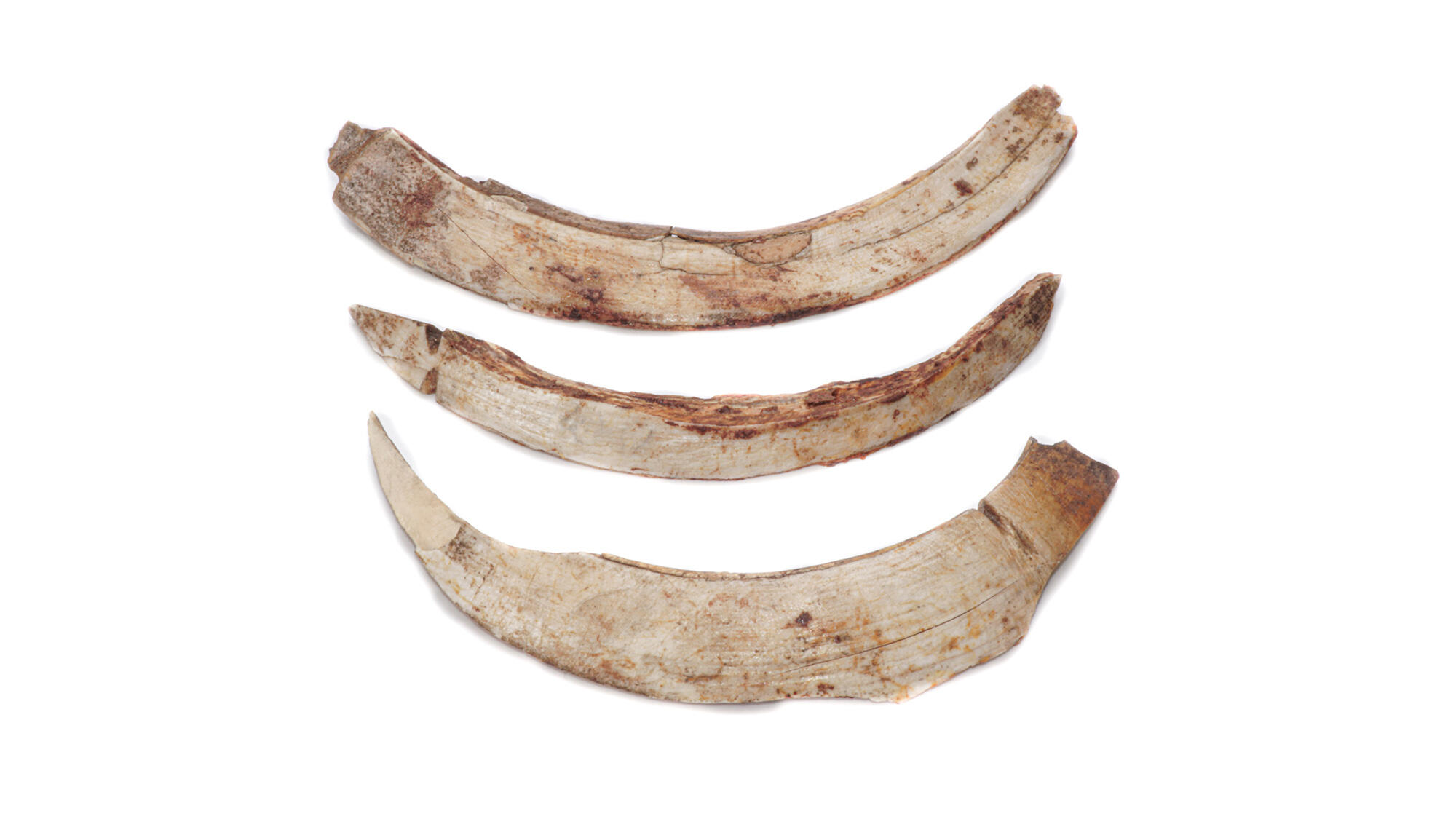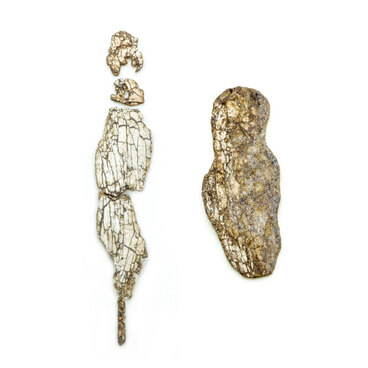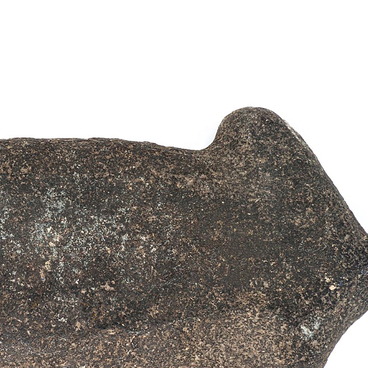Wild hog tusks from the collection of the Regional Museum of Local History were found inside an ancient burial near the village of Isakovo in the Bratsky district of the Irkutsk region. Archaeologists have established that the burial was made in the Neolithic era — about 4600-7500 years ago. The excavations were led by Irkutsk archaeologist Alexey Okladnikov — he donated some of the found objects to the museum.
It was important for representatives of ancient cultures, what position the dead were buried in and what was put in their grave. These data gave an idea of the beliefs of the inhabitants of Siberia. The position of the skeleton from the Isakov burial ground was supine, with the arms extended along the body, and the left one was bent at the elbow. Archaeologists found hog tusks at both sides of temporal bones of the skull, which had their sharp ends turned towards the forehead.
A polished knife was located in the chest area of the skeleton. Beads from the tusks of a Manchurian deer, a large East Siberian deer, lay on the wrist of the left hand in the form of a bracelet. On the left pelvic bone, archaeologists found a beaver’s incisor tooth and fragments of a bone product, and next to them — stone tools that resembled an adze, presumably for woodwork. Arrowheads and destroyed bone plates were also found in the burial.
Scientists suggest that the hog’s tusks served as a talisman that protected the owner and drove away evil spirits from him. The teeth that were placed in burials were split into two parts, usually they were placed at the temples of the deceased. Undivided tusks were very rare.
Most often, hog tusks were found in the graves of the Kitoi, Isakovo and Serovo cultures — they were described in detail by Alexey Okladnikov in the middle of the 20th century. Based on the material of many burial grounds, the archaeologist studied the funeral rites of each culture and offered his chronological concept of how the lifestyle of the Baikal population had developed in the Neolithic era. He wrote that the earliest stages were the Glazkov and Kitoi culture, and they were replaced by later societies: Khin, Isakovo and Serovo.
In the following years, Okladnikov’s colleagues revised and adjusted this diagram.
It was important for representatives of ancient cultures, what position the dead were buried in and what was put in their grave. These data gave an idea of the beliefs of the inhabitants of Siberia. The position of the skeleton from the Isakov burial ground was supine, with the arms extended along the body, and the left one was bent at the elbow. Archaeologists found hog tusks at both sides of temporal bones of the skull, which had their sharp ends turned towards the forehead.
A polished knife was located in the chest area of the skeleton. Beads from the tusks of a Manchurian deer, a large East Siberian deer, lay on the wrist of the left hand in the form of a bracelet. On the left pelvic bone, archaeologists found a beaver’s incisor tooth and fragments of a bone product, and next to them — stone tools that resembled an adze, presumably for woodwork. Arrowheads and destroyed bone plates were also found in the burial.
Scientists suggest that the hog’s tusks served as a talisman that protected the owner and drove away evil spirits from him. The teeth that were placed in burials were split into two parts, usually they were placed at the temples of the deceased. Undivided tusks were very rare.
Most often, hog tusks were found in the graves of the Kitoi, Isakovo and Serovo cultures — they were described in detail by Alexey Okladnikov in the middle of the 20th century. Based on the material of many burial grounds, the archaeologist studied the funeral rites of each culture and offered his chronological concept of how the lifestyle of the Baikal population had developed in the Neolithic era. He wrote that the earliest stages were the Glazkov and Kitoi culture, and they were replaced by later societies: Khin, Isakovo and Serovo.
In the following years, Okladnikov’s colleagues revised and adjusted this diagram.



